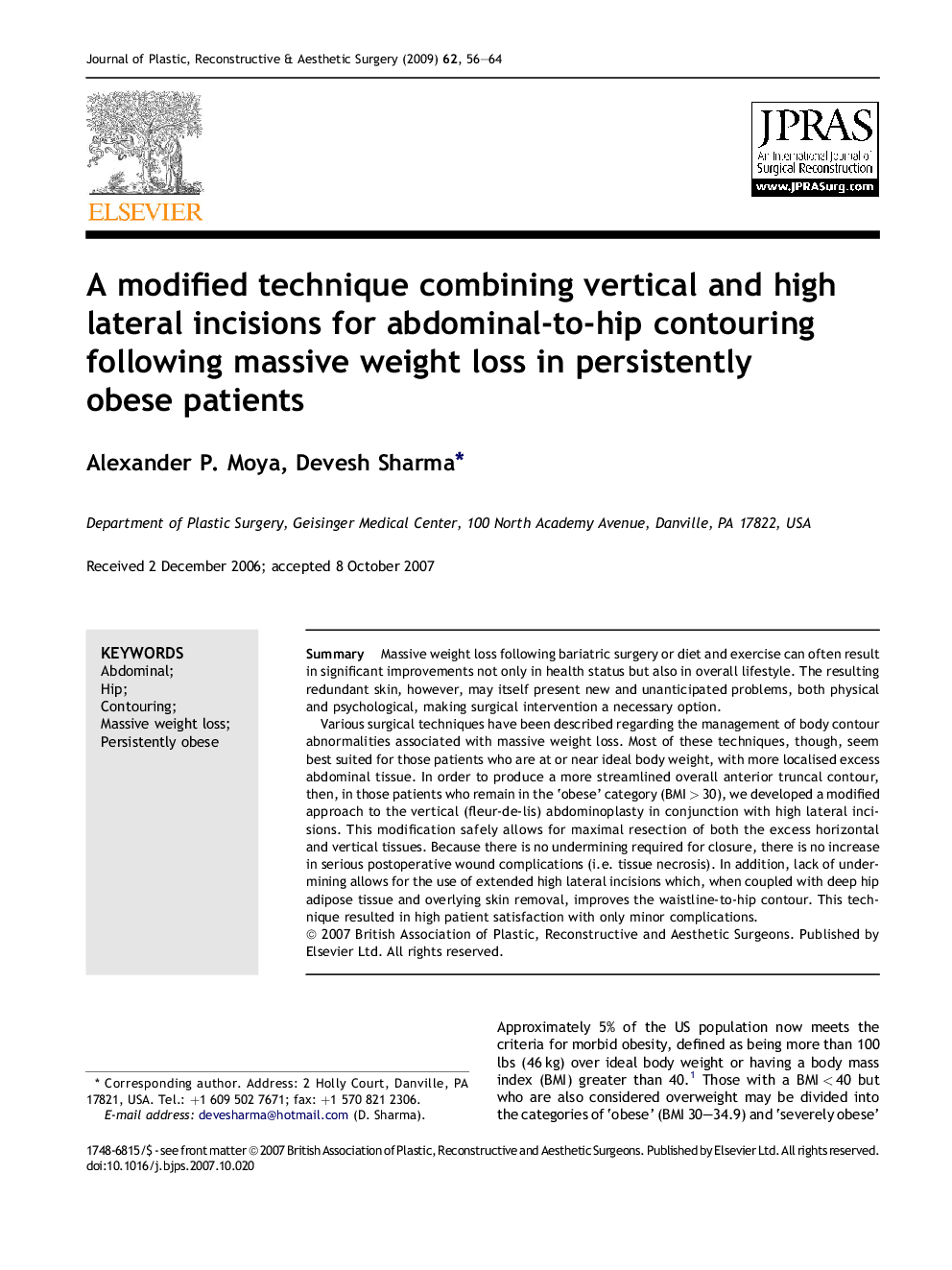| Article ID | Journal | Published Year | Pages | File Type |
|---|---|---|---|---|
| 4120423 | Journal of Plastic, Reconstructive & Aesthetic Surgery | 2009 | 9 Pages |
SummaryMassive weight loss following bariatric surgery or diet and exercise can often result in significant improvements not only in health status but also in overall lifestyle. The resulting redundant skin, however, may itself present new and unanticipated problems, both physical and psychological, making surgical intervention a necessary option.Various surgical techniques have been described regarding the management of body contour abnormalities associated with massive weight loss. Most of these techniques, though, seem best suited for those patients who are at or near ideal body weight, with more localised excess abdominal tissue. In order to produce a more streamlined overall anterior truncal contour, then, in those patients who remain in the ‘obese’ category (BMI > 30), we developed a modified approach to the vertical (fleur-de-lis) abdominoplasty in conjunction with high lateral incisions. This modification safely allows for maximal resection of both the excess horizontal and vertical tissues. Because there is no undermining required for closure, there is no increase in serious postoperative wound complications (i.e. tissue necrosis). In addition, lack of undermining allows for the use of extended high lateral incisions which, when coupled with deep hip adipose tissue and overlying skin removal, improves the waistline-to-hip contour. This technique resulted in high patient satisfaction with only minor complications.
